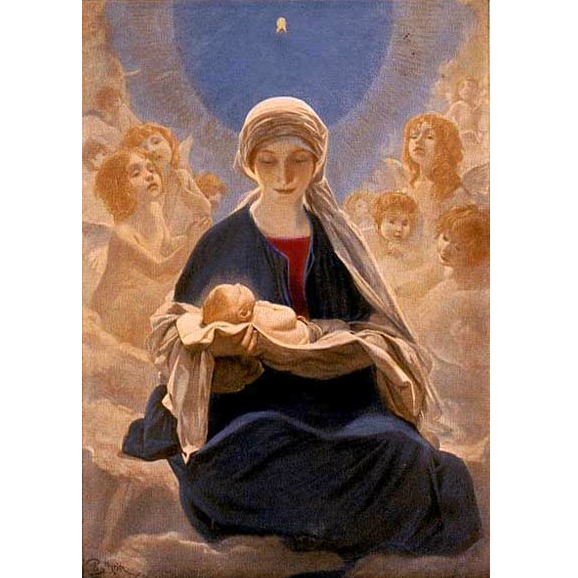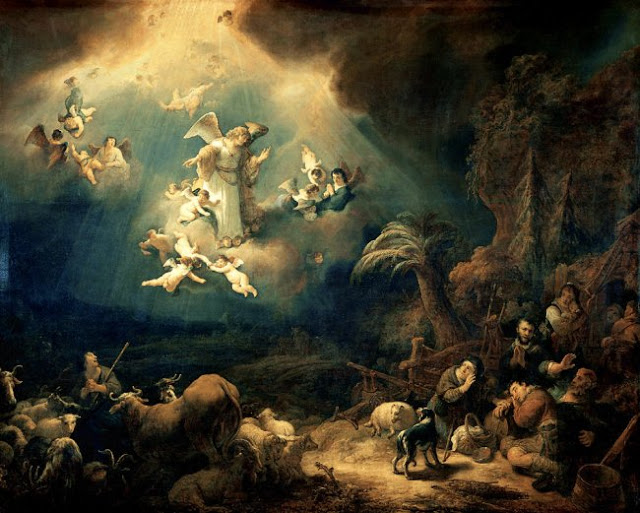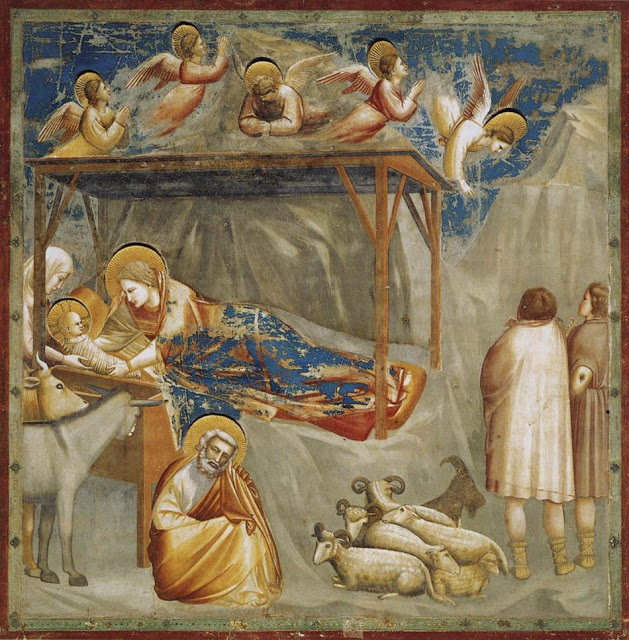When I was expecting my second baby, lo those many years ago, my oldest would happily tell anyone in earshot that the new baby was going to “blast out” of mommy sometime soon. He also thought that maybe it was going to be a baby elephant, “like Dumbo.”
He was wrong . . . on both counts. It was a baby person. And she was born the regular way, through and down and out and whatnot.
And there were the “pangs” (how’s that for euphemistic, huh?) of childbirth to go with it. A challenge, to be sure, but I think it’s kind of cool that women across the world and throughout time are united through the shared experience of pain in giving birth. Whether you went natural or opted for the epidural, be it regular or c-section, there’s pain involved in there somewhere. It unites us in community with each other and with generations past.
But guess who’s NOT in the club?
The Virgin Mary. That’s who.
In addition to being different from us in things like talking with angels, and being a virgin when she conceived her baby, and not sinning . . . ever, she also had a very different experience of childbirth than the rest of us.
It’s been the long and unbroken tradition of the Church that Jesus was born miraculously, blasting out, as it were, without breaking the seal of the womb and without pain to Mary.
It seems like, perhaps in an effort to make Mary more identifiable somehow, we’ve lost track of that deep and ancient tradition. In popular movies we see Mary giving birth the old fashioned way, with pain and pushing and all that.
Granted, she’s considerably calmer than most of us can claim, but the birth depicted here seems like a regular, non-miraculous one.
But NOTHING about the incarnation was regular. Mary isn’t someone we get to identify with, she’s aspirational. She’s perfect. She’s sinless. And she gave birth painlessly, with her physical virginity intact.
The three essential aspects of Our Lady’s Virginity were defined
by Pope St. Martin I in 649 at the First Lateran Council: she maintained her perfect virginity before, DURING, and after the birth
of Jesus. This has always included the traditional patristic and magisterial
understanding that Mary gave “miraculous birth” to Jesus (in the words
of Pope Pius XII, Mystici Corporis, 1943), without any
violation to her virginity. As the Fathers of the
Church explained, as “light passes through glass without harming the
glass,” so Jesus was born without affecting Mary physically.
The mystery of Mary’s virginity in giving birth to the
Savior was preached and taught consistently by the Fathers and Doctors
of the Church. One finds beautiful expositions of it in the homilies and
catecheses of St. Gregory of Nyssa (+ c. 394), St. Ambrose (+ 397), St. John Chrysostom (+ 407), St. Proclus of Constantinople (+
446), Theodotus of Ancyra (+ before 446), St. Peter Chrysologus
(+ 450), Pope St. Leo the Great (+ 461), Severus of Antioch (+
538), St. Romanos the Melodist (+ c. 560), St. Venantius
Fortunatus (+ c. 600), and Pope St. Gregory the Great (+ 604). (Dr. Mark Miravalle)
As Christians, we hear plenty about Mary’s virginity before Jesus was conceived. And Catholics are clear on the point of her remaining a virgin after Jesus’ birth. But I can’t personally ever remember hearing a homily that mentioned Mary’s virginity during birth.
However, the Church Fathers were quite clear about it back in the day.
St. Ambrose: There is a gate of the womb, although it is not always closed; indeed
only one was able to remain closed, that through which the One born of
the Virgin came forth without the loss of genital intactness (per quam sine dispendio claustrorum genitalium virginis partus exivit).
Pope St. Martin I: [Mary] gave birth to (God the Word) without corruption.
The Catechism of the Council of Trent:
or conception, he is born of his Mother without any diminution of her
maternal virginity. As he afterwards went forth from the sepulcher while
it was closed and sealed, and entered the room in which his disciples
were assembled, although “the doors were closed” (Jn. 20:19), or, not to
depart from natural events which we witness every day, as the rays of
the sun penetrate the substance of glass without breaking or injuring it
in the least: so, but in a more incomprehensible manner, did Jesus
Christ come forth from his mother’s womb without injury to her maternal
virginity. …
bring forth children” (Gen. 3:16). Mary was exempt from this law, for
preserving her virginal integrity inviolate, she brought forth Jesus the
Son of God, without experiencing, as we have already said, any sense of
pain.
It’s all a part of the fact that Christ’s incarnation and birth are inextricably, wonderfully, beautifully bound together with his death and ressurection. The wood of the cross recalls the wood of the manger. Jesus was born without breaking the seal of the womb just as he rose from the dead without breaking the seal of the tomb.
How could she not have gazed at her son with awe and wonder on the night he was born?
How could we not do the same?






